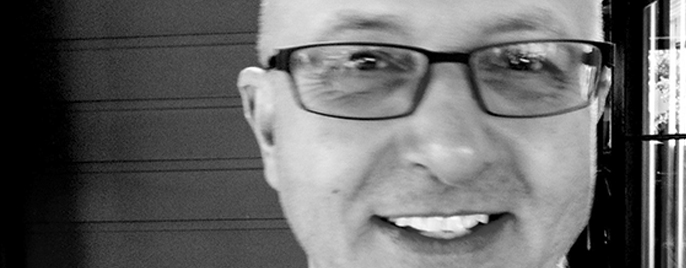Thirst is a self-financed film with a quick turn of an 8 week edit from shoot to lock off. How did this affect the edit?
Shooting in the desert had already begun when I heard about the film, so by the time I started, I was faced with several day’s rushes (ably prepped by Milena Romanin) and a TV-type turnaround to try to get on track. I hadn't met director Robert Carter other than by phone and email so there'd been no opportunity to discuss an approach or talk about style. This is possibly a dream scenario for an editor, but as a first timer, also a little daunting. The approach I took was to carefully audition the performances, then just let my reaction to those lead me through the story. The 13 day shoot meant there could be no pickups so I had to explore every nook and cranny to find what I needed to build the film. The pleasing thing was the quality of the footage. The down side of course was limited coverage and with actors who enjoy improvising, continuity! Look for coffee cups!
Fortunately, when Robert finally came back to the first assembly, he was very happy. I’d already dropped dialogue that I felt was unnecessary and was pleased to find that although Robert is a novelist and loves words, he was more than open to killing his darlings if they were getting in the way. We were able to rework the film for three weeks including some small screenings to reach the cut we have. In answer to the question: I had to work fast.
The film explores 4 people grappling with the knowledge that they are going to die. How did you manage the psychological exploration as the characters waiver from awareness to struggle to acceptance of their predicament?
It’s more an examination of what they come to see as important in their lives than an exploration of their demise, so for me the mission was to keep that journey clear. The interesting thing is that they’ve run out of water through their own (stupid) actions, but this is really just the agent that brings them together and keeps them there. Otherwise these four would never cross paths.
The evocative location would have become a character in the edit. How did you elevate that through sound and picture choices?
The location is a hut on a clay pan with miles of not much around it. We rarely leave the place, so I was quite surprised (pleased) to find that it doesn’t become boring. Nicola Daley’s photography and the production design have created a really rich environment with enough variety of colour and mood that you actually find it a really nice place to hang. In the edit, I just about used every frame and every angle that had been shot.
In sound, John Dennison and Tony Vaccher did an amazing job of the atmospheres, bringing air, wind, heat effected iron and insects in just the right proportions. Wind, flies and bugs were a big feature of the shoot, so we made sure they feature, in less annoying ways. Hats off to Roger Mason for the score as well.
Were there any challenges created by the limited footage that encouraged creative solutions?
Ah yes, well there were a few. 1. We didn’t have a real sandstorm, so some fine work by Chaotic Pictures in totally animating two rather tranquil wide shots did that job. 2. There are two scenes created by massively blowing up and moving around the Red frame and extracting several shots from the two supplied. 3. And when we had really exhausted all scenic options, I enlisted some superb location stills to create two desert montages, which I don’t think anyone has picked yet. There: spoilers!
What was your favourite experience on the film?
Apart from getting a first gig (!), I’d say the sound & music discussions and the final mix (we were lucky enough to be able to do that in Stage One at Deluxe). I’ve been involved in a lot of mixes over the years, but felt really privileged to be in an environment like that, working with really talented people and having some say in how something I’d cut was going to end up. Gold.
